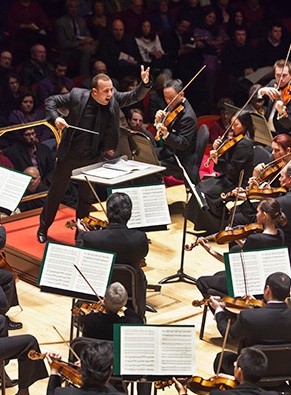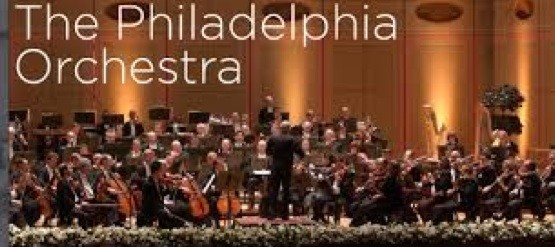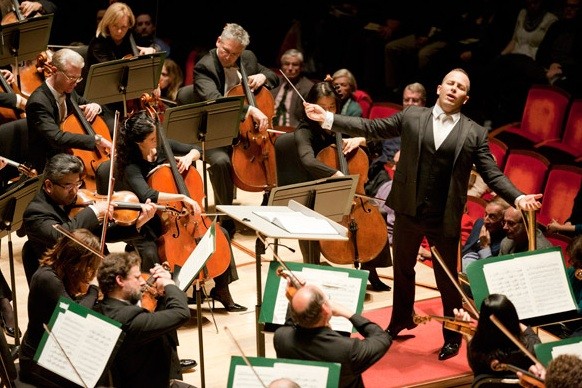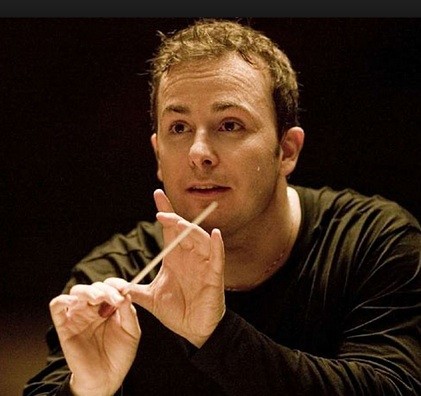The Philadelphia Orchestra at Carnegie Hall
Wizard Nézet-Séguin Conducts
By: Susan Hall - May 15, 2015
The Philadelphia Orchestra
Conducted by Yannick Nézet-Séguin
Piano Solo Emmanuel Ax
Nico Muhly, Mixed Messages
Beethoven, Piano Concerto No. 3 in C Minor
Rachmanioff, Symphony No. 3 in A Minor
Carnegie Hall
New York, New York
May 14, 2015
The program opened with the second piece the Philadelphia Orchestra has commissioned from Nico Muhly. The computer was absent, yet Muhly's poetry emerged full force, tinkling like ice breaking up in Iceland as sleigh bells chime. Or like geysers furiously erupting. You could almost hear the composer listening in one of his favorite retreats. The great swells and swoops of sound were captured by Nézet-Séguin and his orchestra.
Emmanuel Ax gives us Beethoven pure in the 3rd piano concerto. Although his approach is quiet and meditative, there is nothing timid. In fact, the piannissos favored by the pianist reveal the sheer beauty of the composition. Ax is a master and the piano sounds like carillons pealing in its clarity and resonance.
Nézet-Séguin respects Ax's choice. Perhaps it is his own, but no matter. In a concerto where the orchestra and piano speak to each other, the orchestra's answer is in the same spirit as the pianist's: big breaths, long phrases, but always clear. Tonally matched, the conversation is a non-competitive dialogue. It is very peaceful and beautiful.
Nézet-Séguin is not a large man, but like Muti, this works to his advantage as he conducts. Like Muti he uses his entire body to convey the shape of a phrase and its dynamics. There is no question about how he wants the music to sound.
One big difference between the Muti and Nézet-Séguin styles is the smoothness. Nézet-Séguin waltzes with his arms and body. He is balletic; Muti, a spring.
As Ax played Beethoven, you could only see the top of Nézet-Séguin's cropped head, but his feet were in clear view -- toe, heel, toe, like dancing class. Step to the side, hold, return. Nothing seems unnatural. All is grace. Yet the grace is accompanied by a well of good humor.
When the audience trickled in after intermission and the conductor had already mounted the podium, he simply sat down on the stage, smiled and waited. He did not shame the stragglers. Nézet-Séguin played like Charlie Chaplin when he stood too early, as more dalliers came down the aisle. He took to the other side of his perch and laughed with the first violinist and other orchestra members.
The interruption energized the orchestra and the audience. Rachmaninoff's 3rd symphony wrapped us in its sheer beauty. The stand out second movement and its quiet adagio were irresistible. Audiences always loved the piece, composed with a break of decades while Rachmaninoff roamed the world earning his living by playing the piano. How can anyone have said: Rachmaninoff does not have a third symphony in him.
Recently in Philadelphia, after the Principal guest conductor had finished his concert, he remained on the stage and performed chamber music on the piano with Jeffrey Khaner, the principal flutist. Many members of the audience stayed too. Audiences no longer have to be intimated by classical music. It is fun. It is open. It is welcoming. With the Philadelphia Orchestra at Carnegie Hall, classical music has an inviting future.





